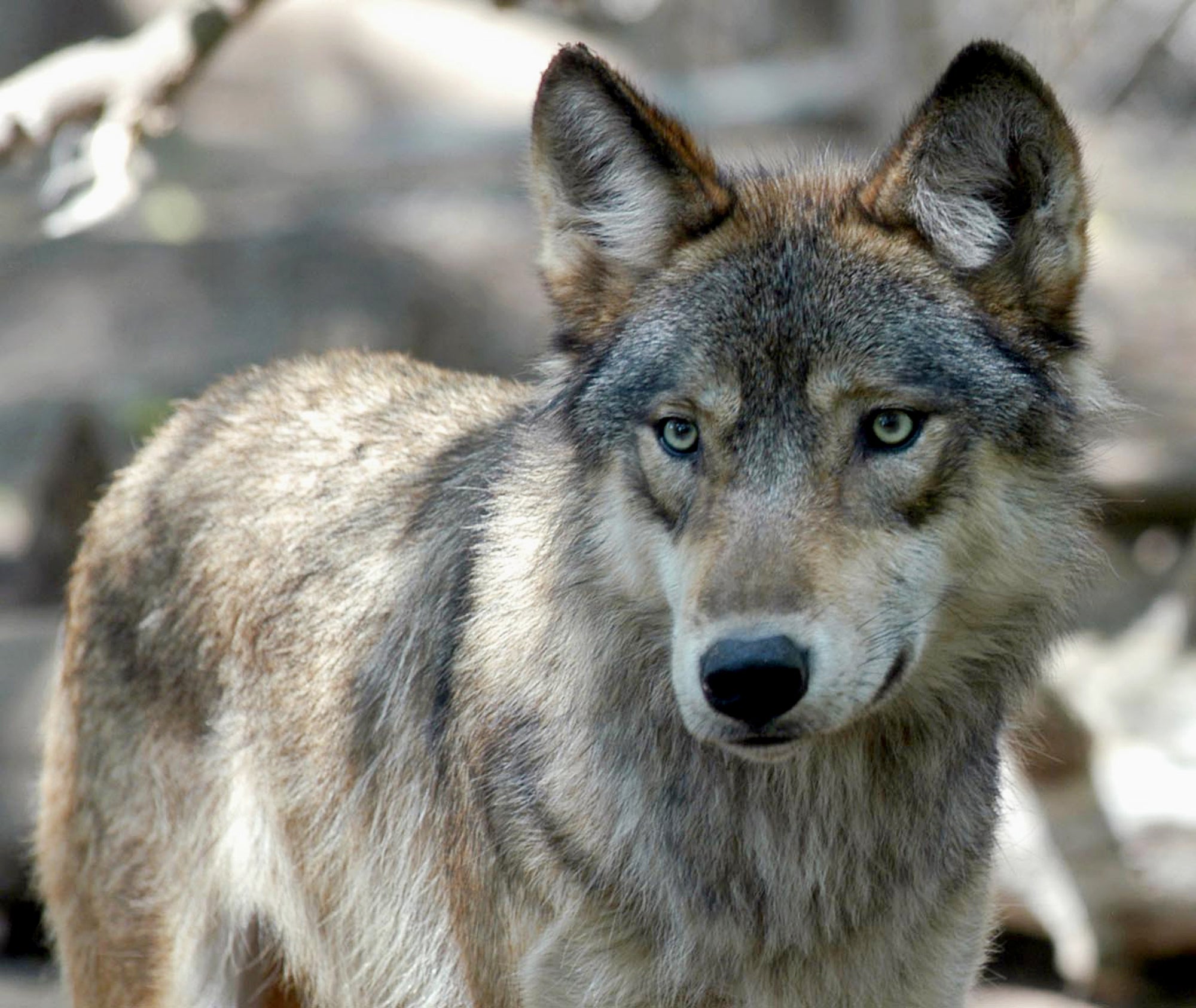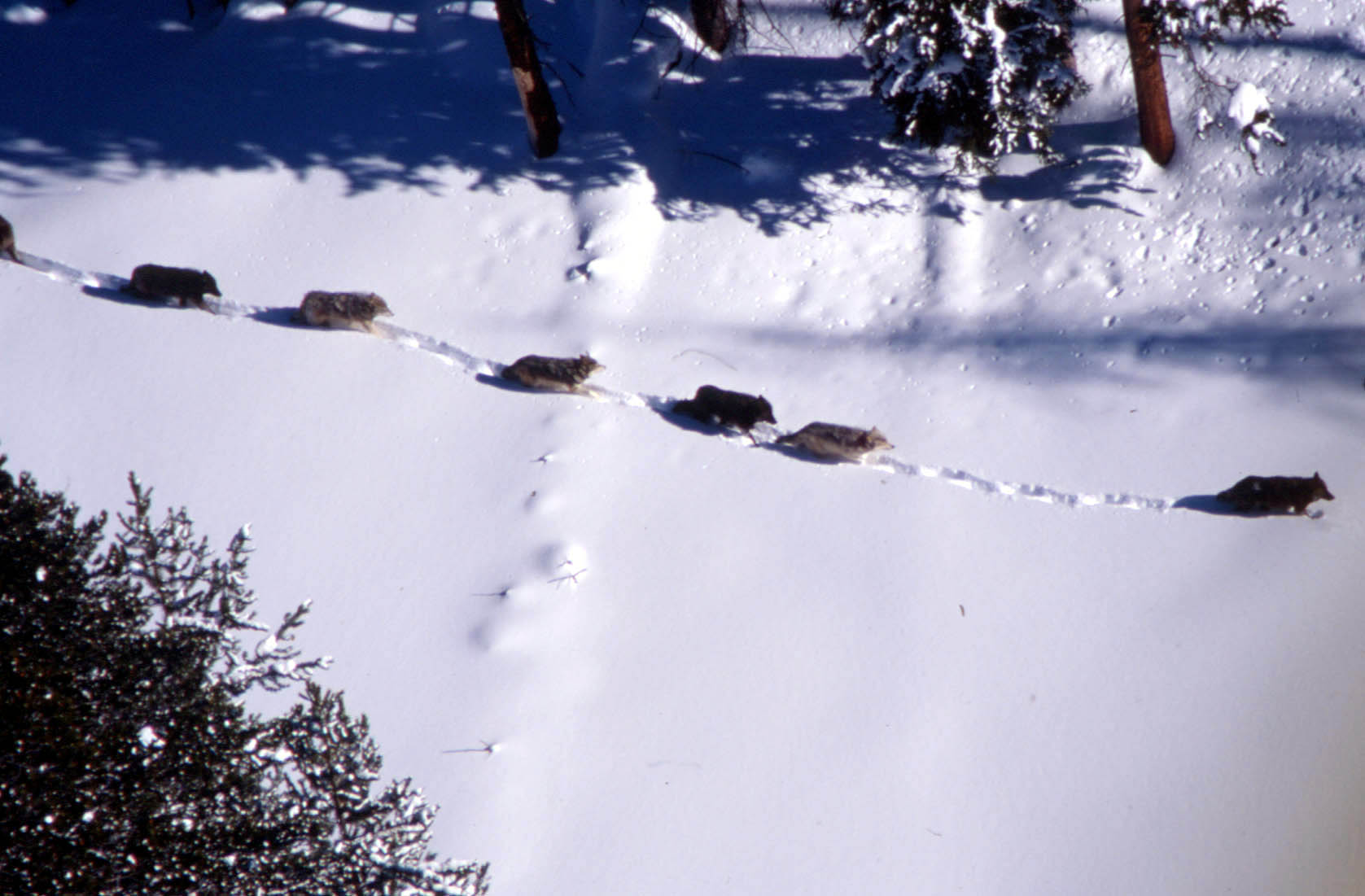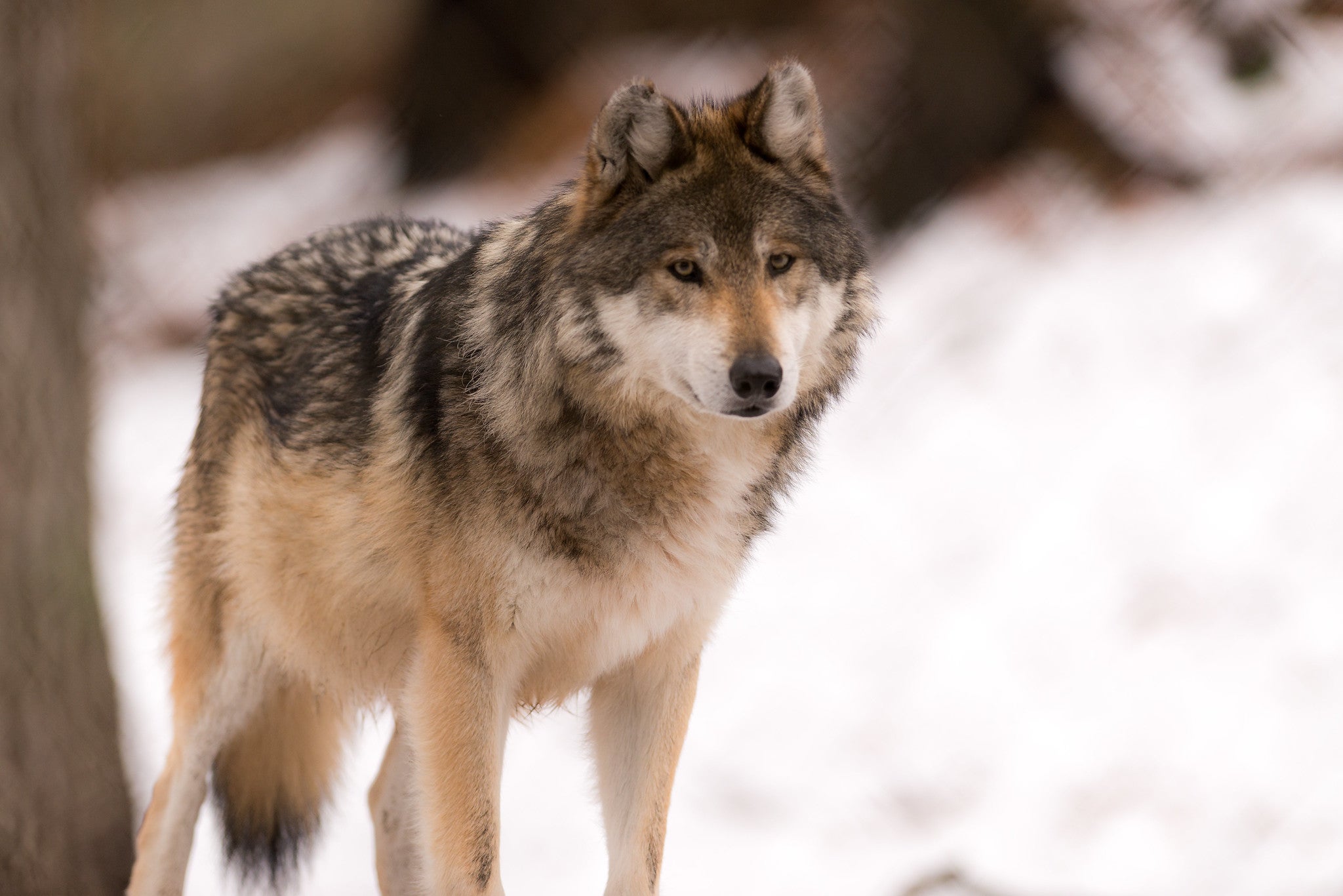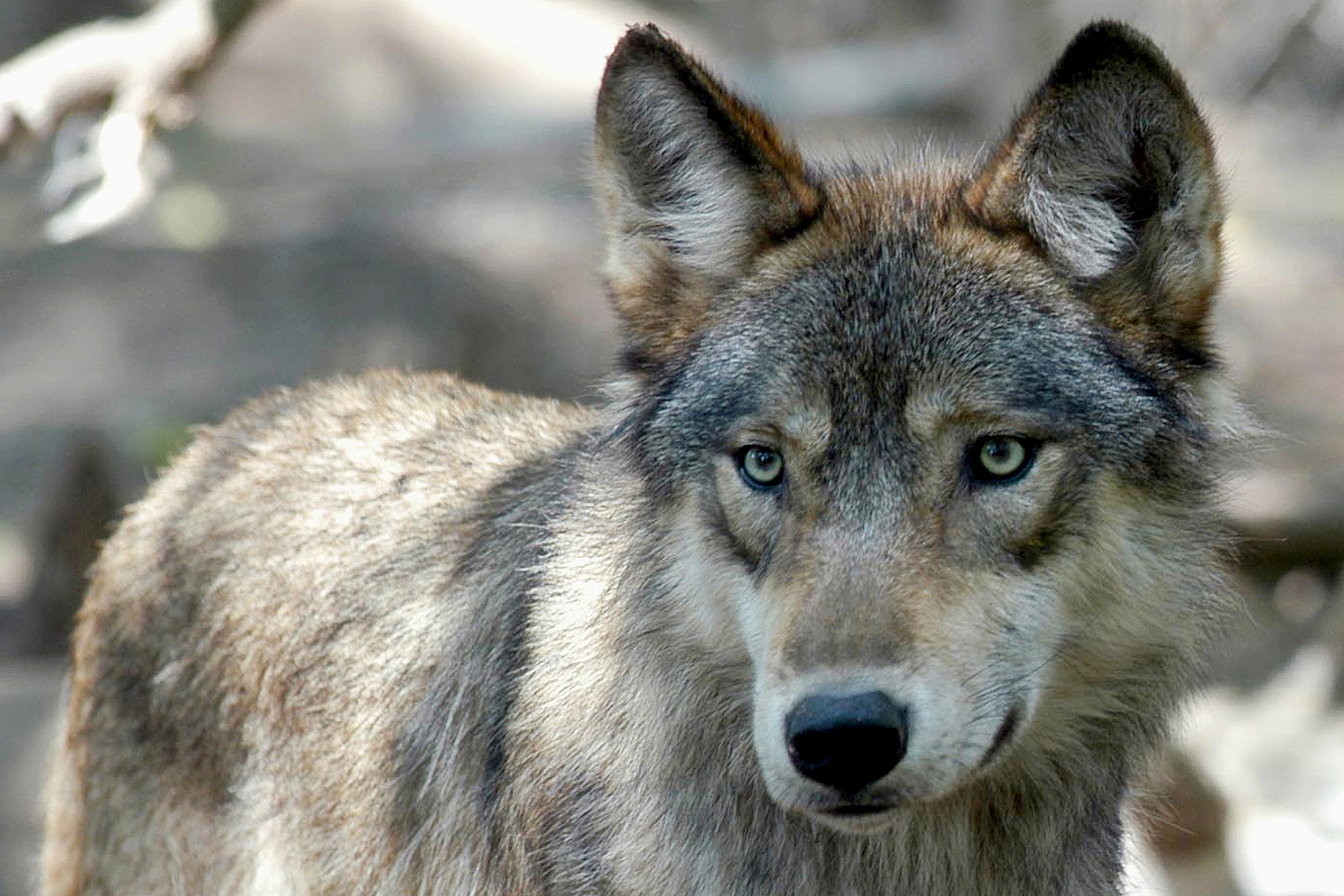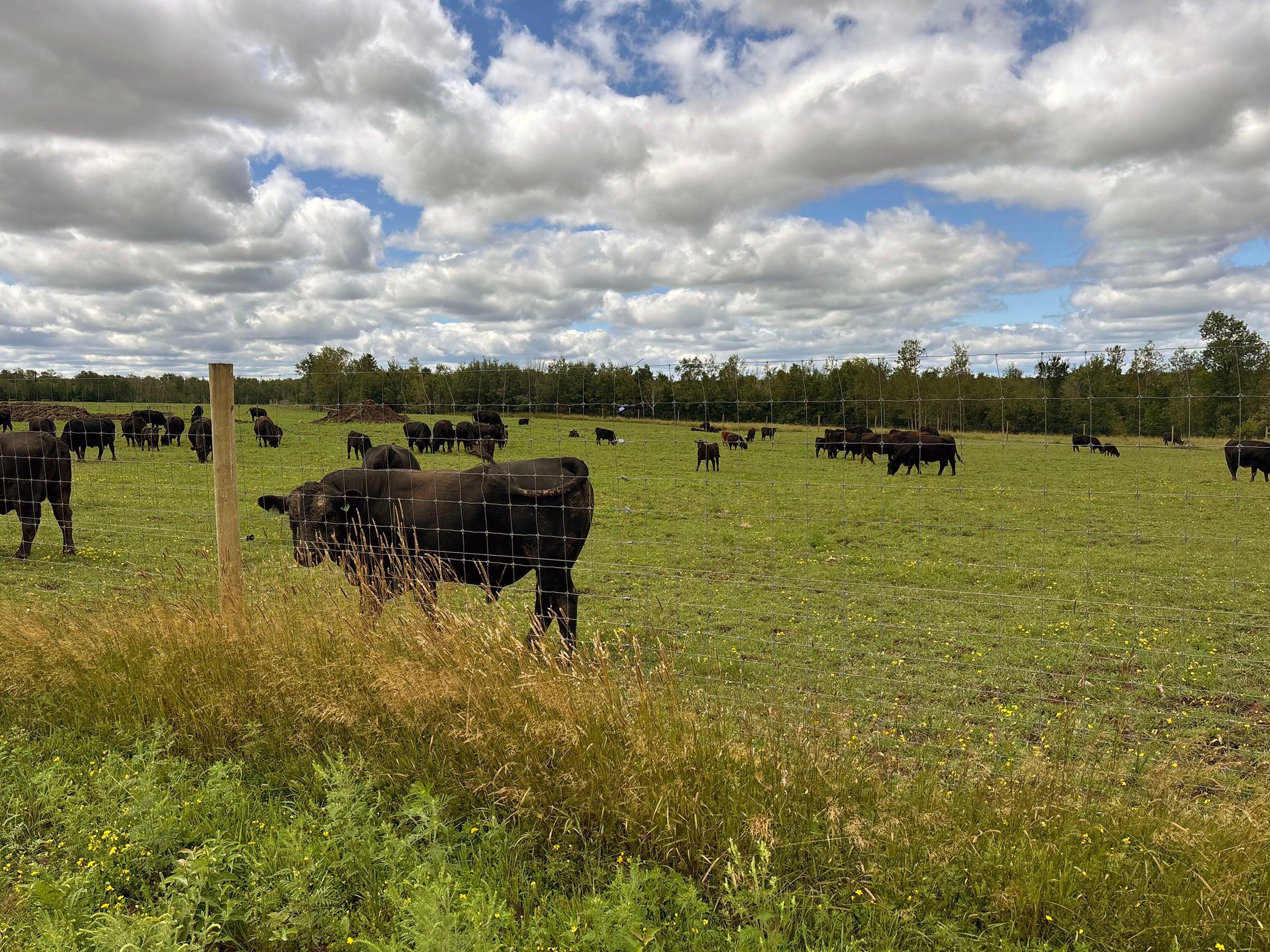The U.S. Fish and Wildlife Service (USFWS) plans to propose a rule to “delist” the gray wolf from the endangered species list in the Lower 48 states.
The announcement was made on Wednesday by Acting Interior Secretary David Bernhardt. The move would return management to the states and tribes, which would reinstate Wisconsin’s wolf hunt that began in 2012.
“Recovery of the gray wolf under the Endangered Species Act (ESA) is one of our nation’s great conservation successes, with the wolf joining other cherished species, such as the bald eagle, that have been brought back from the brink with the help of the ESA,” said a USFWS spokesman in a statement. “Once the proposed rule has published in the Federal Register, the public will have an opportunity to comment.”
Stay informed on the latest news
Sign up for WPR’s email newsletter.
A federal judge ruled in December 2014 that the gray wolf should be placed back on the endangered species list in the western Great Lakes region.
Wednesday’s announcement was hailed as a positive step for those who have been pushing to lift protections for the gray wolf in light of conflicts with livestock and other animals. At the same time, environmental groups denounced the proposal as a political move that would threaten recovery of the animal to its historic range.
Wisconsin’s wolf population has grown to a minimum of around 900 wolves, according to the most recent data from the Wisconsin Department of Natural Resources.
“Numbers now in both Minnesota, Michigan, as well as Wisconsin are well above federal recovery levels and levels that are listed in state wolf management plans,” said Scott Walter, DNR large carnivore specialist. “I think delisting is certainly biologically justified.”
Some farmers and state lawmakers have been pushing to return management to the states, including state Sen. Tom Tiffany, R-Hazelhurst.
“I think we’re in a very strong spot because the (U.S.) Fish and Wildlife Service, the official agency of the federal government that handles these issues, they made a science-based decision saying that the gray wolf had recovered in the Lower 48 states,” Tiffany said.
He acknowledged the proposal would likely face a legal challenge. Around 5,500 wolves currently exist in the continental United States, but that’s a “fraction” of the species historic range, according to representatives of environmental and animal protection groups, including Melissa Tedrowe, Midwest region director for the Humane Society of the United States.
“We believe wolves still need these protections. While we will continue to fight for them, we do not think that states are responsible managers of wolves and experience has shown that,” Tedrowe said. “We’ll be in this fight for the long haul.”
Tedrowe also voiced concerns over reinstatement of Wisconsin’s wolf hunt and the use of what she called “egregiously cruel” methods to hunt wolves, including the use of leg-hold traps and dogs. Wisconsin hunters killed 528 wolves in the three seasons a hunt was held in the state before the animal was placed back on the endangered species list.
Peter David, wildlife biologist with the Great Lakes Indian Fish and Wildlife Commission, said Wisconsin’s wolf hunt promotes a trophy wolf harvest mindset.
“That’s really diametrically opposed to tribal cultural beliefs,” David said. “I think that the management in Wisconsin in particular in this region it really devaluates the cultural and ecological significance of wolves.”
At one time, best estimates from the state DNR show Wisconsin had up to 5,000 wolves in the early 1800s. But they were almost hunted to extinction as farmers voiced frustration with wolves preying on livestock.
Mark Liebaert, chairman of the Douglas County Board of Supervisors, owns a farm with about 30 beef cattle in far northern Wisconsin. In recent years, he said he has lost animals to wolf depredation.
“When cattle are out on pasture and there’s wolves that know how to kill them, they’re under danger the entire time that they’re out there,” Liebaert said. “When cattle are under stress, they don’t get bred. When cattle are being chased by wolves, they don’t eat. When cattle are being chased by wolves, their babies die. It makes it harder for a livestock operation to be handled and managed.”
State data shows there were 51 confirmed cases of wolf depredation in 2018, including dogs and livestock. The number of confirmed wolf depredations declined from 76 in 2016 to 42 in 2017.
Tedrowe argued wolf depredation on livestock has been greatly exaggerated in Wisconsin, noting there are nonlethal means to control problem wolves. Farmers contend such methods, such as flagging, electric barriers, lighting or sound devices, are ineffective.
The Humane Society of the United States and the Center for Biological Diversity petitioned the USFWS in December to keep protections for gray wolves. On the question of a legal challenge, Tedrowe said they would “weigh our options,” encouraging people to comment to maintain protections for the wolf. The Center for Biological Diversity said it would resort to a court action to keep the government from delisting the wolf, according to the Associated Press.
Meanwhile, Tiffany said he planned to bring up Wisconsin’s wolf hunt during the Thursday confirmation hearing for DNR Secretary-designee Preston Cole.
“I’m hopeful that the Evers’ administration will make this a priority to have the wolf season reinstated here in Wisconsin,” Tiffany said.
A spokeswoman for Gov. Tony Evers didn’t clarify his position on Wisconsin’s wolf hunt in an email Wednesday.
“We haven’t yet seen the full details on the federal proposal,” the spokeswoman said. “But this is another example that underscores why it’s important that we bring science back to the decision-making process in Wisconsin.”
The gray wolf was last delisted in 2012.
Wisconsin Public Radio, © Copyright 2025, Board of Regents of the University of Wisconsin System and Wisconsin Educational Communications Board.
